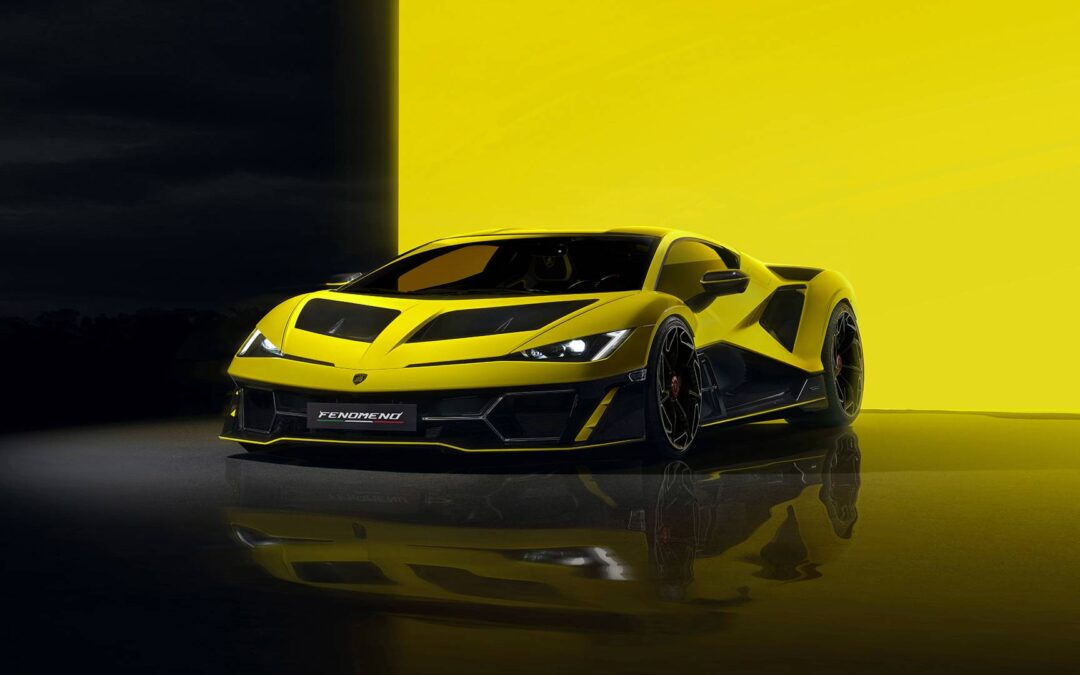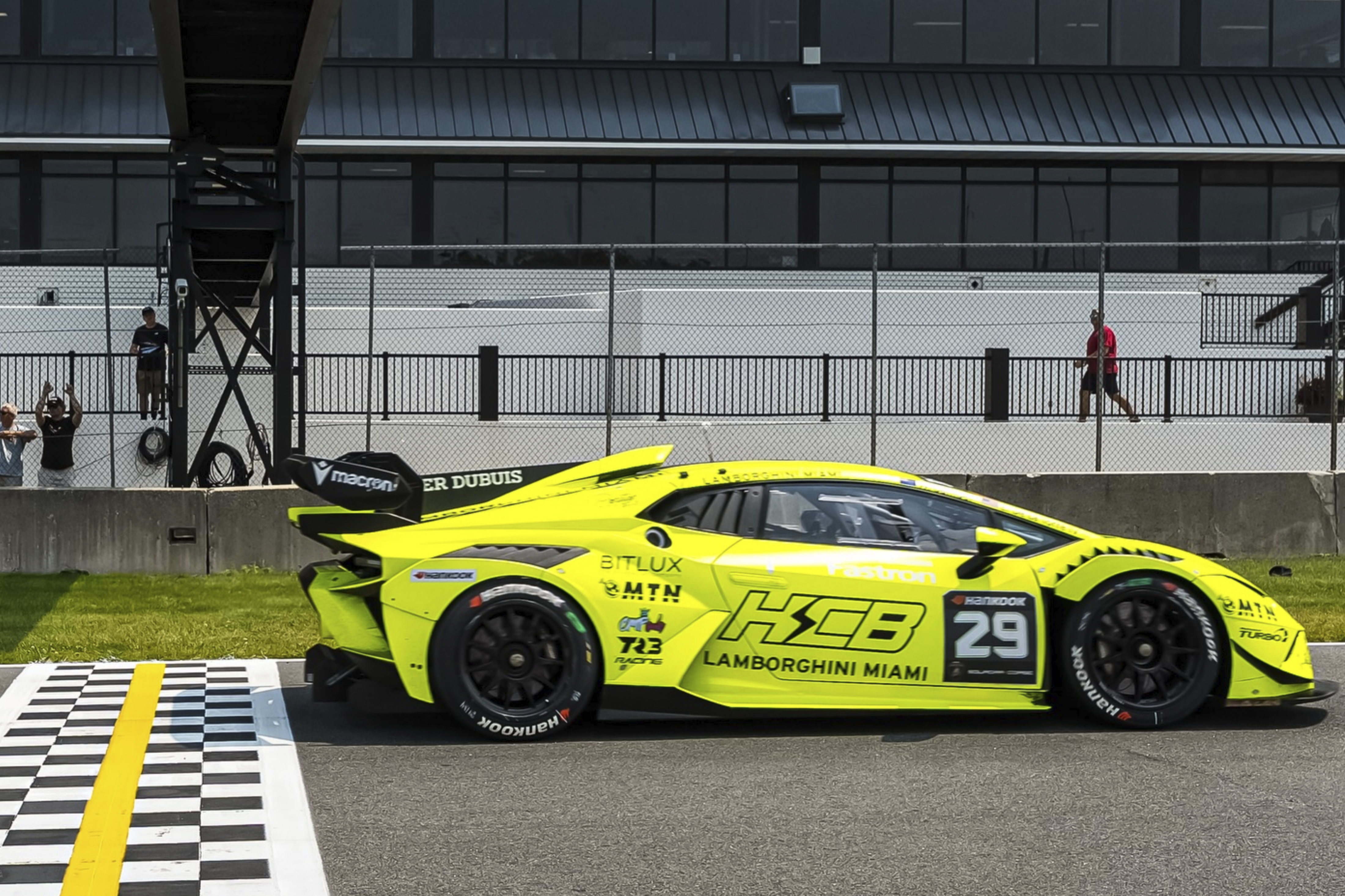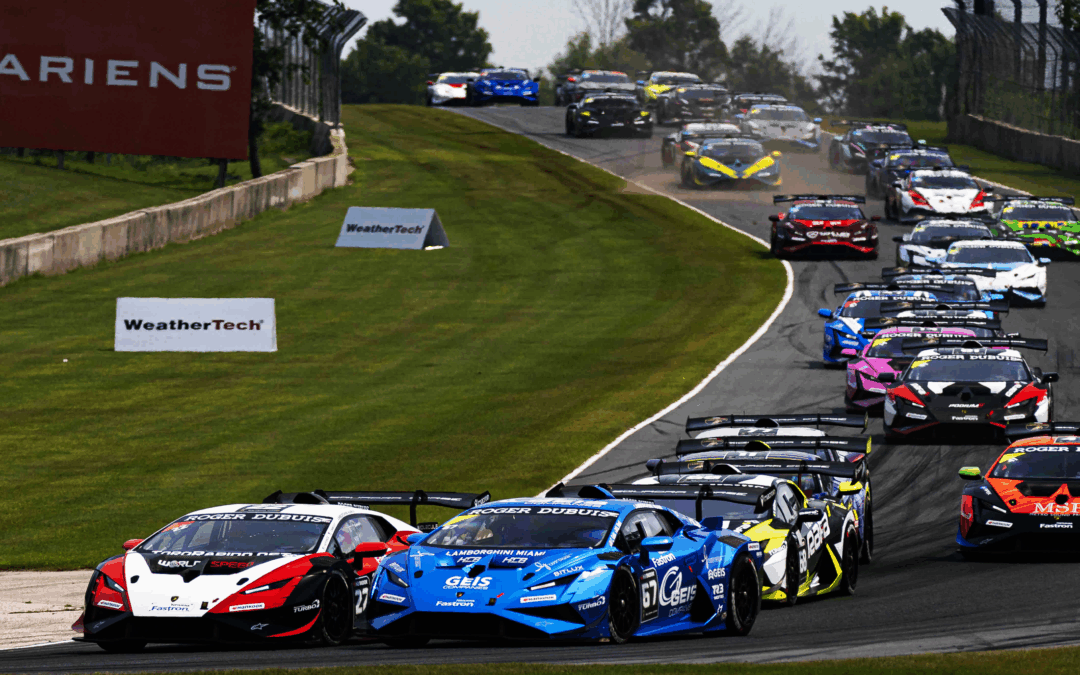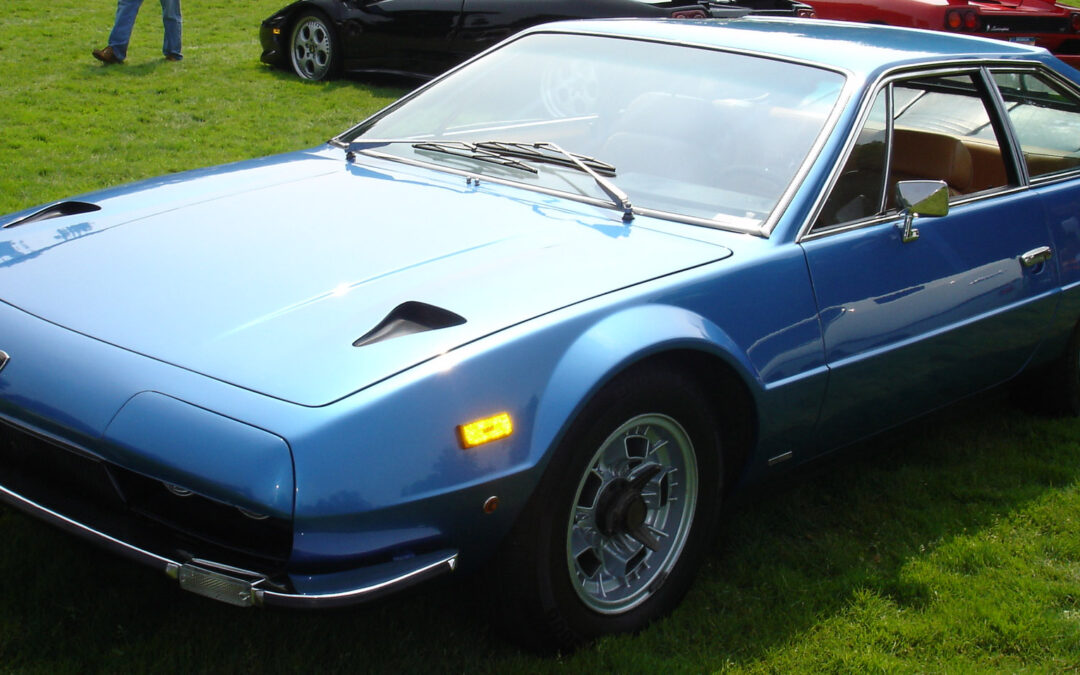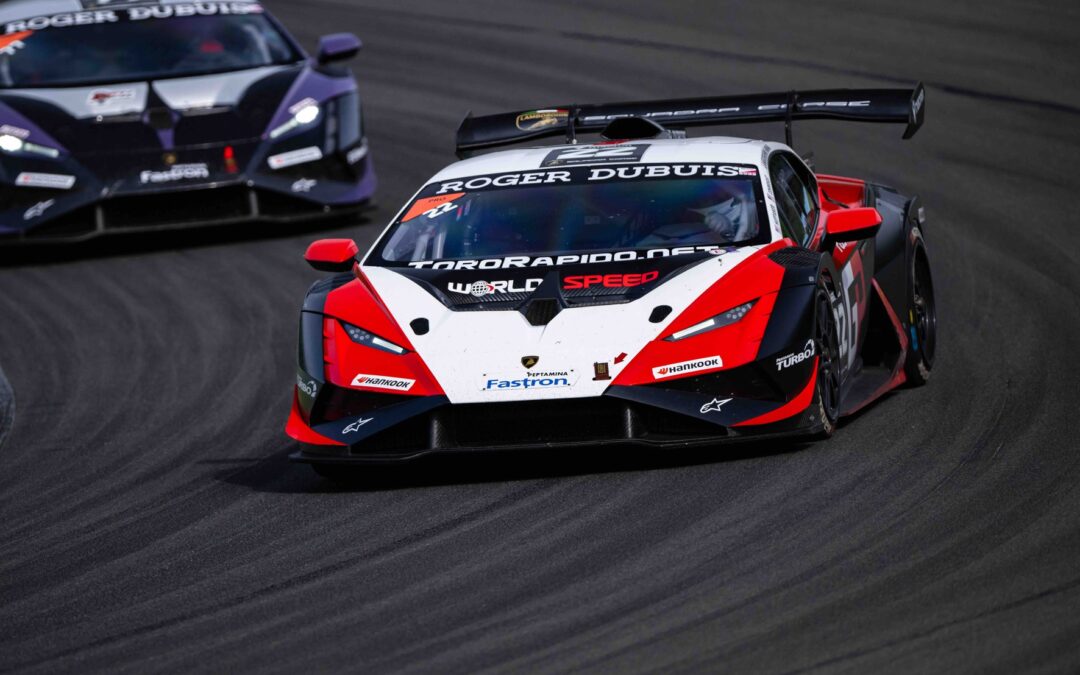
by Lamborghini Fan 1 | Sep 11, 2025 | Modern, Recent Models
Few brands can capture the raw emotion and exclusivity of Lamborghini. From the Reventón to the Sesto Elemento and the Centenario, the marque’s limited-edition “few-off” models have always been a bold statement of design, performance, and pure presence. Now, as the brand celebrates 20 years of its visionary Centro Stile design center, it’s unleashing its latest masterwork: the Fenomeno.
Unveiled at Monterey Car Week 2025, the Fenomeno is a hyper-limited run of just 29 cars, built to be a living “design manifesto.” The name itself is a nod to a legendary bull, but it’s also a perfect description of this machine: a phenomenal blend of heritage and cutting-edge innovation.
Power and Precision
Underneath its long, sleek “longtail” bodywork lies a powertrain unlike any Lamborghini before it. The heart is a naturally aspirated V12, the most powerful in the brand’s history, producing a staggering 835 CV on its own. It’s paired with three electric motors—two on the front axle and one on the rear—for a combined output of 1,080 CV.
This isn’t just a numbers game, though. The Fenomeno is a technological tour de force. It’s the first Lamborghini to feature a 6D sensor, and its race-inspired CCM-R Plus carbon-ceramic brakes ensure that all that power can be brought to a halt with incredible precision. The result? A new benchmark for performance. The Fenomeno sprints from 0 to 100 km/h in an astonishing 2.4 seconds and blasts past 200 km/h in just 6.7 seconds, all on its way to a top speed of over 350 km/h. Its weight-to-power ratio of 1.64 kg/CV is the best Lamborghini has ever achieved.
A Design Revolution
While its performance is record-breaking, the Fenomeno’s design is what truly sets it apart. Lamborghini Centro Stile has taken the brand’s iconic design language and distilled it into a “hyper-elegant” form. The front lights are a striking reinterpretation of the bull’s horns from the brand’s new logo, while the side profile is a sweeping, singular line inspired by the Essenza SCV12. Every surface is sculpted for both aesthetics and aerodynamics.
The rear is particularly groundbreaking, with a continuous line that connects the wing to the wheel arch. This futuristic look is capped off by a vertical “Y” light signature and hexagonal exhaust outlets. The new doors feature an updated take on the classic NACA duct, providing a 30% more efficient cooling system. Inside, the “Feel like a pilot” philosophy is taken to the extreme, with a minimalist cockpit, a race-inspired steering wheel, and a trio of digital screens that put the driver in full control.
Carbon fiber is everywhere, from the aeronautics-inspired chassis (or “monofuselage”) to the seats and dashboard. This isn’t just for looks; it’s a testament to Lamborghini’s relentless pursuit of lightness and rigidity.
With the Fenomeno, Lamborghini isn’t just launching another limited-edition car; it’s revealing its vision for the future. It’s a physical manifestation of innovation, a celebration of heritage, and a clear signal that the legend of the V12 is far from over.

by Lamborghini Fan 1 | Aug 21, 2025 | Super Trofeo NA
TR3 Racing celebrated a highly successful weekend at Road America, securing multiple podium finishes across the Pro, Pro-Am, and Am classes during Round 4 of the Lamborghini Super Trofeo season. The team’s strong performance, highlighted by consistent pace and strategic driving, was a testament to their preparation and skill.
The No. 29 TR3 Lamborghini Miami Huracán, driven by Elias De La Torre IV and Will Bamber, was a front-runner all weekend. They topped both practice sessions and qualified third for both races. In Race 1, Bamber’s clean opening stint set the stage for De La Torre IV to take over and drive to an impressive second-place finish. In Race 2, a controversial post-race penalty for an alleged pit lane infraction briefly dropped them from second, but it was later reversed by IMSA, reinstating their rightful podium spot. This solid performance allowed the team to maintain its lead in the Pro Championship standings.
Conrad Geis and Jason Hart in the No. 67 Pro-Am car had a challenging but ultimately victorious weekend. After a strong P4 finish in Race 1, they came back in Race 2 to deliver a commanding performance. Geis charged to the class lead on the restart before handing off to Hart, who fought his way back to P1, securing a well-deserved victory with a 10-second lead. The win puts them within a single point of the championship lead.
In the Am class, Dean Neuls secured a third-place finish in Race 1 and a consistent fourth in Race 2. Mateo Siderman also showed great pace, finishing fourth in Race 1 before his race was cut short by an incident in Race 2
“We were able to retain our points lead in the Pro class standings,” said Elias De La Torre IV. “As a team, we maximized our efforts, and the entire TR3 Racing crew and my co-driver Will did a fantastic job all weekend.”
Jason Hart expressed his excitement about the Pro-Am win: “It feels incredible to come away with a P1 finish. We’re more motivated than ever to finish the season on top.”
The team’s success at Road America solidifies their position as a top contender, leading the Pro championship and sitting in second for the Team Championship. With the final North American races at Indianapolis Motor Speedway approaching, TR3 Racing is poised for a strong finish to the season.

by Lamborghini Fan 1 | Aug 21, 2025 | Motorsports, Super Trofeo NA
The championship battles in Lamborghini Super Trofeo North America continued at the 4.048-mile Road America circuit July 31 – August 3rd. In front of a massive crowd, 35 Lamborghinis put on an unforgettable show.
One of the standout performers was the #22 WSM/GPi Lamborghini, driven by Scott Huffaker and Jaden Conwright. The team showed blistering speed from the moment they unloaded the car, consistently running towards the front of the pack throughout the weekend.
Qualifying proved to be a chaotic affair. During the first session, a red flag came out before anyone could complete a lap. Despite being limited to just four laps once the track went green, the #22 still managed to secure the fifth-fastest overall time. The second qualifying session was even more challenging, with incidents eating up most of the track time. The team was fortunate to get in a single clean lap, which was enough to land them a fifth-place start in their class for Race 2.
In Race 1, the team’s hard work paid off, as they crossed the finish line in third place, extending their impressive podium streak. Race 2 was an intense battle, but Huffaker and Conwright once again piloted the #22 Graham Prewett Inc / WSM Huracán to a podium finish. Initially scored in second place, a post-race penalty for another team was later reversed, officially moving the #22 to third.
“This was a strong weekend for us,” said World Speed Team Manager Jan Trojan. “Jaden, Scott, and the entire crew performed flawlessly, and we earned podium finishes in both races. While the top spot is always the goal, securing two trophies and getting the car back without any damage is a testament to the skill and dedication of our drivers and team. We’re heading to the Brickyard with our eyes set on the top step.”
The #22 Graham Prewett Huracán has podiumed at every race weekend this season, and is now fourth in the Pro Championship standings as the series heads to its final North American race weekend Rounds 9 and 10 at Indianapolis Motor Speedway September 18th-20th.
More Info

by Lamborghini Fan 1 | Aug 12, 2025 | Motorsports, Vintage / History
In the annals of automotive history, few cars possess a mystique as profound as the Lamborghini Miura. But within this legendary lineage, one name stands out for its tantalizing blend of performance, innovation, and tragedy: the Miura Jota. This one-off test mule, built by the brilliant development driver Bob Wallace, was a testament to what Lamborghini was truly capable of, even though the company’s founder, Ferruccio Lamborghini, famously refused to enter the world of motorsports.
The story of the Jota begins in 1970. While company founders Giotto Bizzarrini and Gianpaolo Dallara had departed after Ferruccio’s steadfast refusal to go racing, chief technical officer Paulo Stanzani and Bob Wallace remained. Stanzani gave Wallace the green light to create a track-focused Miura, a project Wallace would undertake in his own time. The goal was to build a car that would conform to the FIA’s Appendix J racing regulations, hence the name “Jota.”
Wallace’s modifications were extensive and transformative. The most significant change was a dramatic reduction in weight. He replaced steel chassis components and body panels with a lightweight aluminum alloy called Avional, and swapped out the side windows for plastic. These changes resulted in a car that weighed approximately 800 lbs (360 kg) less than a production Miura. The Jota’s exterior also received a front spoiler and fixed, faired-in headlights, and the single large fuel tank was replaced with two smaller, sill-mounted units.
Under the skin, the Jota was a different beast altogether. The suspension was reworked, and the car was fitted with wider (9″ front, 12″ rear) and lighter wheels shod with low-profile Dunlop racing tires. The engine was heavily modified to produce between 418–440 bhp (312–328 kW) at a staggering 8800 rpm. This was achieved through an increased compression ratio (from 10.4:1 to 11.5:1), altered camshafts, electronic ignition, a dry-sump lubrication system, and a less restrictive exhaust. This combination of a powerful engine and a lightweight body meant the Jota could rocket from 0-62 mph in just 3.5 seconds and reach a top speed of 190 mph. Its specific power output was an impressive 110 bhp per liter—a remarkable achievement for a naturally aspirated engine of the era.
Despite its incredible performance and track-ready design, the Jota never raced. After extensive testing by Wallace, it was sold to a private buyer in 1971. Tragically, the car’s life was cut short when it crashed on an unopened ring road around Brescia and was completely destroyed in the ensuing fire.
The legend of the Jota, however, lived on. Its destruction led to a demand for similar cars, and Lamborghini itself created a limited run of “SVJ” replicas. While these cars borrowed some of the Jota’s styling cues, they were not as highly developed and were far more civilized. The legend also inspired other one-off creations, including the “Millechiodi” and a meticulously crafted tribute built by a passionate enthusiast named Piet Pulford. This recreation, built with the help of Bob Wallace himself, took 15 years to complete and is considered to be a near-perfect facsimile of the original Jota

by Lamborghini Fan 1 | Jul 29, 2025 | Etcetera, Modern
In a move that sent shockwaves through the automotive world, Lamborghini resurrected one of its most legendary names: the Countach. The new Countach LPI 800-4 is not merely a tribute, but a limited-production hybrid supercar designed to bridge the past and the future, blending iconic styling cues with cutting-edge technology.
A Nod to the Past: The original Countach, born in the early 1970s, redefined supercar aesthetics with its extreme wedge shape, scissor doors, and aggressive lines. It was a poster car for a generation, a symbol of audacious design and raw power. The LPI 800-4 pays homage to this legacy, featuring a clean, minimalist approach that references early Countach models. Designers have carefully integrated modern interpretations of classic elements, such as the distinctive periscopio roofline, the NACA ducts on the sides, and the signature hexagonal wheel arches. The absence of a massive rear wing, present on later Countach iterations, signals a return to the purity of Marcello Gandini’s original vision.
Powering into the Future: Beneath its nostalgic skin lies a thoroughly modern powertrain. The “LPI” in its name stands for “Longitudinale Posteriore Ibrido” (Longitudinal Rear Hybrid), indicating its hybrid heart. It combines Lamborghini’s formidable 6.5-liter naturally aspirated V12 engine with a 48V e-motor, directly mounted on the gearbox. This electric motor, powered by a supercapacitor, provides an additional surge of power, bringing the total system output to an astonishing 814 metric horsepower (803 hp). The “800” in its name signifies this approximate power output, while “4” denotes its permanent all-wheel-drive system.
This hybrid setup offers immediate torque, enhancing acceleration and providing a smoother, more refined power delivery than previous V12s. The LPI 800-4 can sprint from 0 to 62 mph (100 km/h) in a blistering 2.8 seconds and reach a top speed of 221 mph (355 km/h). Its carbon fiber monocoque chassis ensures exceptional rigidity and a lightweight structure, contributing to its incredible performance and handling.
Exclusivity and Impact: True to Lamborghini’s tradition of limited runs, only 112 units of the Countach LPI 800-4 will be produced, a number that refers to the internal project name “LP 112” of the original Countach. This extreme rarity, coupled with its blend of heritage and hyper-modern engineering, solidifies its status as an instant collector’s item.
The Countach LPI 800-4 is more than just a supercar; it’s a statement. It demonstrates Lamborghini’s commitment to innovation while celebrating the iconic design language that has defined the brand for decades. It’s a bridge from a wild, analog past to a technologically advanced, electrified future, and a testament to the enduring appeal of the Countach legend.

by Lamborghini Fan 1 | Jul 29, 2025 | Vintage / History
The Lamborghini Jarama: A Unique Chapter in Sant’Agata’s History
Often living in the shadow of its more flamboyant siblings like the Miura and Countach, the Lamborghini Jarama represents a significant, albeit often overlooked, chapter in the marque’s illustrious history. Introduced at the 1970 Geneva Motor Show, the Jarama was designed as a refined 2+2 grand tourer, a concept much favored by Ferruccio Lamborghini himself, who famously drove a Jarama S for years.
A Brief History: The Jarama was intended to be the successor to the Islero and the final evolution of Lamborghini’s front-engine, V12-powered 2+2 grand touring line. It was also specifically designed to meet stringent US safety and emissions standards, a crucial market for the Italian automaker. Styled by Marcello Gandini at Bertone, the Jarama featured sharp, angular lines that were characteristic of 1970s design, with distinctive “eyelid” covers over its headlights that gave it a unique, somewhat sleepy appearance. While its platform was a shortened version of the larger Espada’s chassis, the Jarama aimed for a more compact and sporting demeanor.
Two main versions were produced: the Jarama GT (1970-1972) and the Jarama S, or GTS (1972-1976). Both were powered by Lamborghini’s magnificent 3.9-liter (3,929 cc) V12 engine, initially producing 350 horsepower in the GT and later upgraded to 365 horsepower in the S model thanks to revised carburetors, heads, and exhaust. Power was sent to the rear wheels via a five-speed manual transmission, though a rare automatic option was also available.
Despite its powerful V12 and impressive top speed (around 160-165 mph), the Jarama faced a challenging market. Contemporary reviews sometimes criticized its interior ergonomics, heavy steering, and cramped rear seats, especially when compared to the more spacious Espada or the pure exhilaration of the Miura. Production numbers were modest, with only 177 GTs and 150 S models built, totaling just 327 units, making it one of the rarer Lamborghinis.
Review: The Unsung GT: Today, the Lamborghini Jarama is seen by many enthusiasts as an underappreciated classic. While its styling might not be as instantly iconic as the Miura, its angular design has a certain period charm. The true appeal lies in its magnificent V12 engine – a mechanical masterpiece that delivers a thrilling soundtrack and impressive performance, even by modern standards. The driving experience, though perhaps not as agile as a dedicated sports car, offers a compelling blend of power, luxury, and grand touring comfort.
The Jarama represented a pivotal point for Lamborghini, marking the end of an era for their front-engine GTs before the company fully embraced the mid-engine supercar layout with the Countach. For those who appreciate a powerful, rare, and genuinely drivable classic Lamborghini, the Jarama offers a unique and rewarding ownership experience, embodying the spirit of a true gentleman’s express from Sant’Agata. Its rarity and the increasing appreciation for its historical significance are gradually pulling it out of obscurity.

by Lamborghini Fan 1 | Jul 29, 2025 | Etcetera, Modern, Motorsports, Super Trofeo NA
For aspiring racers and seasoned drivers looking to hone their craft at the pinnacle of motorsport, Standing Start Driver Development has unveiled an exhilarating new program, putting the raw power and precision of the Lamborghini Huracán Super Trofeo EVO2 directly into the hands of its students. This isn’t your average track day; it’s an immersive, one-on-one journey designed to elevate driving skills to a championship-winning level.
Founded by World Speed Motorsports, a venerable institution in driver development with over 30 years of experience, Standing Start is built on a philosophy of personalized instruction and uncompromising quality. Their new Lamborghini program is a testament to this commitment, offering an unparalleled opportunity to master a modern, factory-built race car.
“This is NOT a racing school car, or a modified street car,” emphasizes the Standing Start team. “This is a 620 horsepower machine built at the Lamborghini factory to compete on some of the greatest tracks in the world.” The Huracán Super Trofeo EVO2, co-engineered with Italian racing legends Dallara, boasts a carbon fiber body, sequential racing transaxle, fully adjustable anti-roll bars, Öhlins dampers, and bespoke racing tires – every element designed for ultimate performance and driver feedback.
What truly sets Standing Start apart is its “one-on-one” format. Unlike traditional racing schools where students can be constrained by the pace of the group, Standing Start programs are meticulously structured around a single driver. This means exclusive track time, a dedicated professional race team, and focused coaching that directly addresses the individual’s strengths and weaknesses.
“At a racing school, you can be at the mercy of the level of the other students,” notes Standing Start. “With our program, we focus on the concepts you are struggling with, and move on quickly on the ones you have mastered. Practice DOES NOT make perfect, it only makes permanent. Perfect practice makes perfect. You will learn the difference with Standing Start’s systems.”
The program’s comprehensive approach goes beyond mere lap times. Drivers will delve into crucial aspects of competitive racing, including:
- Lap time reduction techniques: Analyzing data and optimizing every corner.
- Race strategy: Understanding fuel management, tire degradation, and pit stop timing.
- Overtaking tactics: Developing the confidence and skill to make decisive passes.
Imagine sliding into the snug, carbon-fiber bucket seat of the Lamborghini Super Trofeo Huracán. The minimalist interior, focused purely on performance, cocoons you. As the naturally aspirated V10 roars to life behind you, a visceral symphony of mechanical fury and precision engineering vibrates through your very being. This is the same beast used in worldwide competition.
For those serious about advancing their racing careers or simply experiencing the thrill of a cutting-edge race car in a professional environment, Standing Start Driver Development’s new Lamborghini program offers a pathway to unlock true potential. With a lineage of World Speed alumni competing and winning in prestigious series like IndyCar, NASCAR, IMSA, and GT World Challenge, the new Lamborghini Huracán Super Trofeo EVO2 program is set to forge the next generation of motorsport champions.
Learn more at: www.StandingStart.com

by Lamborghini Fan 1 | Jul 29, 2025 | Motorsports
Bowmanville, Ontario, Canada – In a display of strategic brilliance and a dash of good fortune, the #45 Wayne Taylor Racing Lamborghini Huracán GT3 EVO2 piloted by Danny Formal and Trent Hindman clinched a sensational victory at Mosport, marking Lamborghini’s maiden IMSA WeatherTech SportsCar Championship win of the year. What started as an uphill battle transformed into a triumph, proving that in endurance racing, a clever mind can often outpace raw speed.
From Adversity to Ascendancy
The 2h 40 minute sprint cup round, the fourth of the season, saw the #45 Lamborghini start fifth on the grid. However, their race took an immediate turn for the worse when contact on the opening lap sent Formal spinning, relegating them to the absolute tail end of the field. It was a disheartening start, especially for a car that, despite arriving as the heaviest in its class, had shown promising pace in practice, consistently within a second of the fastest GTD entries.
Formal, a Lamborghini Young Professional Driver, described the harrowing opening stint: “It was a crazy race. I got t-boned going into Turn 9 fighting for second at the start. Got on the back foot there and had to drive the whole stint with a broken rim. The vibration was abnormal. The team told me to keep on going and push through. Kind of had no feeling on my right arm and leg due to the vibration but the car was fantastic at race pace.”
The Bold Gamble That Paid Off
With the #45 languishing at the back, Wayne Taylor Racing made a courageous call. As a full course yellow (FCY) period emerged, most of their rivals dove into the pits for fuel and fresh tires. But the #45 team, with Hindman now at the wheel, went against the grain, electing to stay out on track. This bold gamble was aimed at consolidating track position and hoping for further neutralizations.
Hindman, a past Lamborghini Super Trofeo World Finals winner, put his faith entirely in his crew: “Whatever those Wayne Taylor Racing guys up on that pit box tell me, I believed. I trust them. They said we had it and I had all the faith in the world in them.”
The strategy paid dividends almost immediately. Hindman raced away to a commanding 30-second lead over the next GTD competitor. The team knew, however, that they needed at least one more FCY to stretch their fuel to the checkered flag. And as if on cue, their wish was granted in the final hour when the second-placed #78 Forte Racing Lamborghini Huracán GT3 EVO2 of Mario Farnbacher crashed out after contact with an LMP2 car. This, coupled with a subsequent final caution that brought the race to an end under yellow, ensured the #45 maintained its lead, securing a remarkable back-to-front victory.
This marked a significant milestone for Wayne Taylor Racing, capturing their first-ever IMSA GTD victory and their first GT3 success with Lamborghini. For both Hindman and Formal, it was their maiden IMSA success, a just reward after the heartbreak of a late-race retirement at the Daytona 24 Hours in January.
GTD Pro: A Strong Showing for Pfaff Motorsports
While the #45 celebrated in GTD, the #9 Pfaff Motorsports Lamborghini Huracán GT3 EVO2 also put in a strong performance in the GTD Pro class at their home race. Lamborghini Factory Drivers Andrea Caldarelli and Marco Mapelli battled hard to secure a respectable fifth-place finish. They had topped opening practice, hinting at their potential, but knew the race would present a different challenge. Mapelli started strong, moving up a position from sixth on the grid, while Caldarelli took over for the second stint. Despite dropping back slightly at the final FCY restart, their consistent effort showed the Huracán GT3 EVO2’s competitiveness.
Victory is Sweet
The elation was palpable in the winner’s circle. Formal, despite the physical toll of his opening stint, beamed with pride: “The guys at Wayne Taylor Racing, everyone on that stand, we really truly deserve this win. We have had it close so many times this season. Trent did fantastic, had to drive two hours without water, he is an iron man! So proud of him, so proud of the team. We really deserved this win. This program is fantastic, and it has been a long time coming.”
Hindman echoed the sentiment: “What a race! The guys over the wall and Danny – they did an amazing job. I have been on the wrong side of these kind of races enough to know you what you have to do to get it and that is exactly what we did. So grateful for the whole Wayne Taylor Racing team. It’s been a long time coming for us and glad it is here.”
This Mosport triumph serves as a powerful reminder that in the high-stakes world of IMSA racing, a shrewd strategic mind, combined with unwavering teamwork and a touch of racing luck, can lead to the most improbable and satisfying victories.

by Lamborghini Fan 1 | Jul 29, 2025 | Motorsports, Super Trofeo NA
ROAD AMERICA July 31 – Aug 3, 2025
